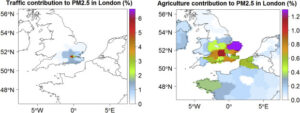Strumento a supporto della pianificazione territoriale in tema qualità dell’aria
On the design and assessment of regional air quality plans: the SHERPA approach. Journal of Environmental Management (2016). Authors: P. Thunis, B. Degraeuwe, E. Pisoni, F. Ferrari, A. Clappier. DOI:10.1016/j.jenvman.2016.09.049.
ABSTRACT
Although significant progress has been made in Europe regarding air quality, problems still remain acute for some pollutants, notably NO2 and Particulate Matter (fine and coarse fractions) in specific regions/cities. One issue regarding air quality management is governance, i.e. the selection of appropriate and cost effective strategies over the area controlled by policy makers. In this work we present a new approach to integrated assessment modelling focusing on regional and urban aspects. One of the key added values is spatial flexibility, namely the possibility to assess the contributions from different regions to air quality at any given location. The SHERPA tool is shown to be particularly helpful in addressing the following tasks: source allocation, governance and the assessment of scenario impacts. Application of the methodology over the London area for yearly averaged PM2.5 concentrations demonstrates these features. Given that it is possible to use the SHERPA interface with other types of data, SHERPA can also be seen as a means to foster harmonization in the field of model evaluation.

